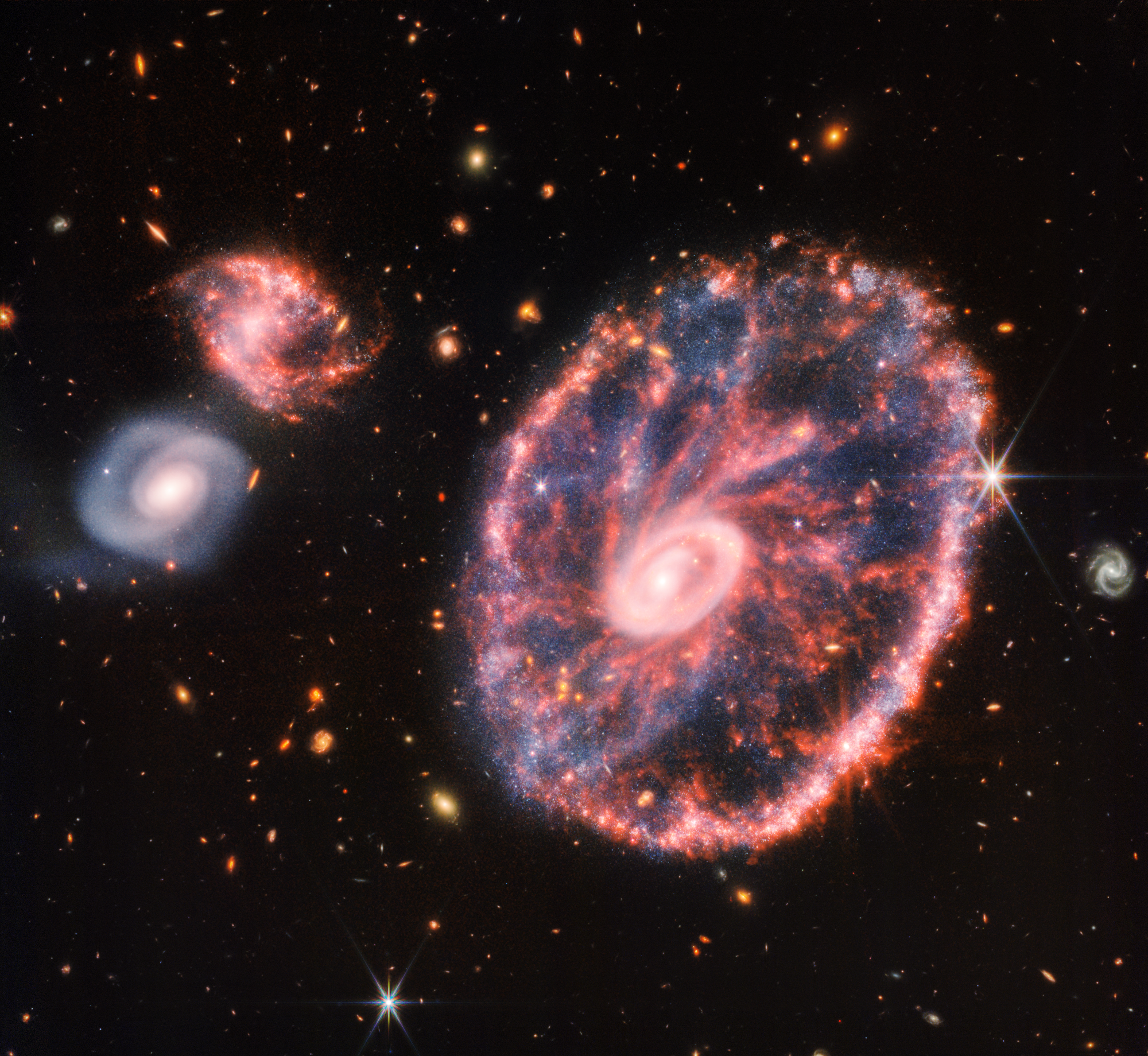We are never done marveling at the JWST. In addition to its amazing shape and color, his observational tools have this week uncovered a beautiful galaxy that provides information on the formation of black holes and stars. The circular and reddish galaxy is known as Cartwheel Galaxy, 500 million light-years away from Earth, as seen in the NASA photograph.
To put it another way, NASA says this particular image from the James Webb Space Telescope looks like ripples on the surface of a pond. If you believe NASA, his birth was caused by colliding spiral galaxies (Cartwheel Galaxy). According to the experts, the Cartwheel galaxy has two rings that radiate outward from the collision’s core. It also shows the black hole’s activity at the galaxy’s core and how it has changed over billions of years, according to the picture.
With the use of this new “Cartwheel” data, it is possible to determine the galaxy’s star’s age and learn more about the dust that constitutes the “spokes” of the wheel. Silicate dust, which is quite prevalent on Earth, was found there by Webb.
It is anticipated that there will be numerous moments of wonder like these in the future since this latest finding shows that the JWST has only just started to send back useful information.
Amazing Images Of Jupiter And Other Galaxy Regions were also captured by the Webb
The JWST has already succeeded to stun the scientific community despite the fact that it has only been functioning for a brief length of time. The public was shown the breathtaking images by NASA.
The image was captured by Webb’s NIRCam, which was pointed towards Jupiter for about 10 mins while using the F212N filter to examine light that had a wavelength of 2.12 microns, or about as long as a typical bacteria, according to the Space.com story.
According to the report that was published on Space.com, the image was captured by Webb’s NIRCam after having been focused on Jupiter for more than 11 minutes using the F212N filter. This filter catches the light that has a frequency of 2.12 microns, which is about equivalent to the size of a normal bacterium.
The large asteroid Hygeia, the supernova remnant Cassiopeia A, and Jupiter’s volcanic moon Io will be the focus of the NASA James Webb Telescope’s observations beginning next week, according to the source. To date, researchers have made the discovery of 55 distant galaxies with the use of data from the JWST, with 44 of those galaxies being entirely new to the field of scientific study.
Jupiter, the biggest planet within the solar system, shone in the darkness of deep space in an incredible image captured on July 27 by the JWST.
The picture, which emphasized the planet’s distinctive characteristics, was taken on July 27 by the telescope’s NIRCam. Great Red Spot and atmospheric bands are seen in the photograph.
In order to analyze events like winds and auroras, scientists need to understand the thermodynamic structure and layers of the atmosphere and planet. This picture and the data obtained by the JWST telescope will aid in this effort.
The image was captured on July 27 by the telescope’s Near Infrared Camera NIRCam instrument, revealing the planet’s distinguishing features in exquisite detail. The earth’s atmosphere may be clearly seen in this image, as can the Great Red Spot.
By giving insight into the thermodynamic makeup and levels of the atmosphere and planet, the image and the JWST data are intended to support research on meteorological and interplanetary occurrences including winds and auroras.
A little over a fortnight ago, the James Webb Space Telescope published a picture of a galaxy known as GLASS-z13. At the time, this galaxy was believed to be the earliest in the universe, with an estimated age of barely 300 million years after the Big Bang.
Just a week after discovering the first galaxy, the Hubble Space Telescope discovered another one that was much older! The JWST published a photo of the GLASS-z13 galaxy around two weeks ago. Given that it was believed to have existed for barely 300 million years after the Big Bang, this galaxy was formerly considered to be the oldest in the universe. Amazingly, a week later, the telescope found a galaxy that was even older.

